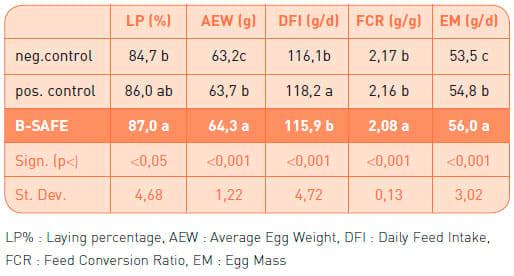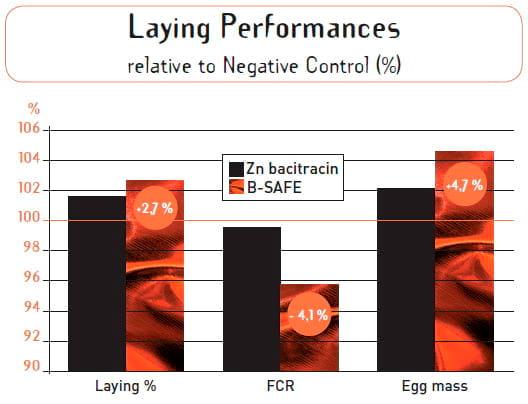Effects of a patented activated clay on laying hens performances

- daily feed consumption, feed conversion ratio


The information is excellent, a country like Pakistan where we are looking for antibiotic free diet for broiler, particularly in the last phase of production, will be helpful for the producer.
Given the explanation for the mechanism of action of the commercial product perhaps then the control group should have included a copper source ( such as Copper sulphate, for instance) instead of an antibiotic.
It is a good concept if it clicks for controlling the bacterial infection . Time will pave the way and we are working with all positive thoughts. Poultry get copper as a part of trace mineral along with others in layer and broiler diet. If clay -with copper charging may be more helpful for bird?It is a good way to withdraw antibiotics in poultry feed if used. Nowadays many veg feeds do not have antibiotics in feed. Drrathm
Dear Pat Banjo, charcoal and B-SAFE have probably different functions and modes of action. B-SAFE is activated by copper: a very low level of copper is enough to have antimicrobial activity of B-SAFE because of the localisation of copper at the surface of the clay (very thin particules size).
Generally charcoal is more used to bind toxins and this is not the target of B-SAFE. B-SAFE acts more on bacteria and is more a modulator of the gut flora.
What is the difference between activated clay and activated charcoal? Any possible difference(s) in their functions and mode of action?
Good luck sir. It will be nice to avoid antibiotic use in poultry feed which would be economical. thank you for explaining the concept adopted . dr rathm
Dear Dr Dhar, thank you for your comment.
Dear Desalew Tadesse and dear Dr Rath, thank you for your questions.
B-SAFE is an activated clay that means that during the manufacturing process there is an ion exchange. This ion exchange is highly controlled to obtain a positively charged entity (B-SAFE). Once in the gut there is an attraction between B-SAFE and the bacteria (negatively charged on their membranes) and this attraction disturbs the proper functionning of the bacteria membranes. B-SAFE acts as a modulator of the gut flora and this modulation allows good zootechnical results. There is no known effect of B-SAFE as a toxin binder, it is more a direct antimicrobial effect.
We have a lot of field trials in differents countries to say that B-SAFE can avoid antibiotics used as growth promoters and that B-SAFE improves performances in broilers and layers.
This poster has been published at Alternatives To Antibiotics symposium in Paris at the end of september.
Danièle MARZIN / Marie-Laurence LE RAY : B-SAFE product manager








.jpg&w=3840&q=75)







.jpg&w=3840&q=75)